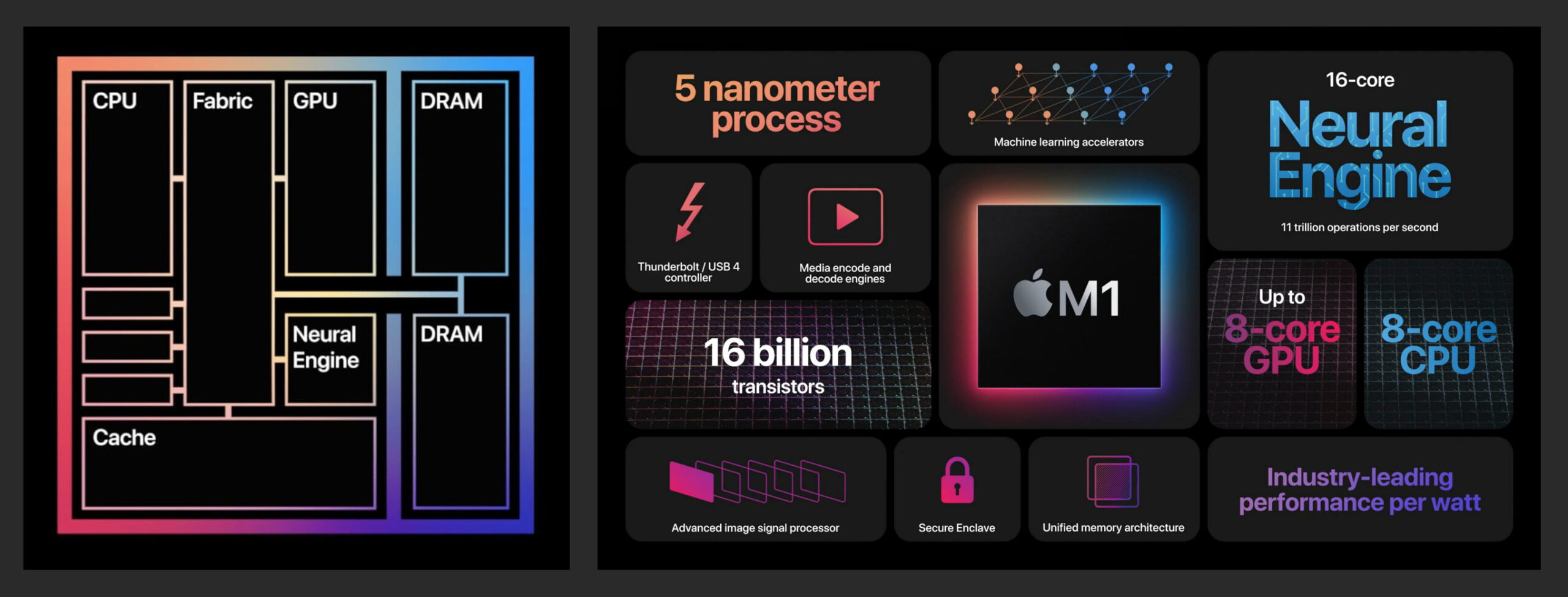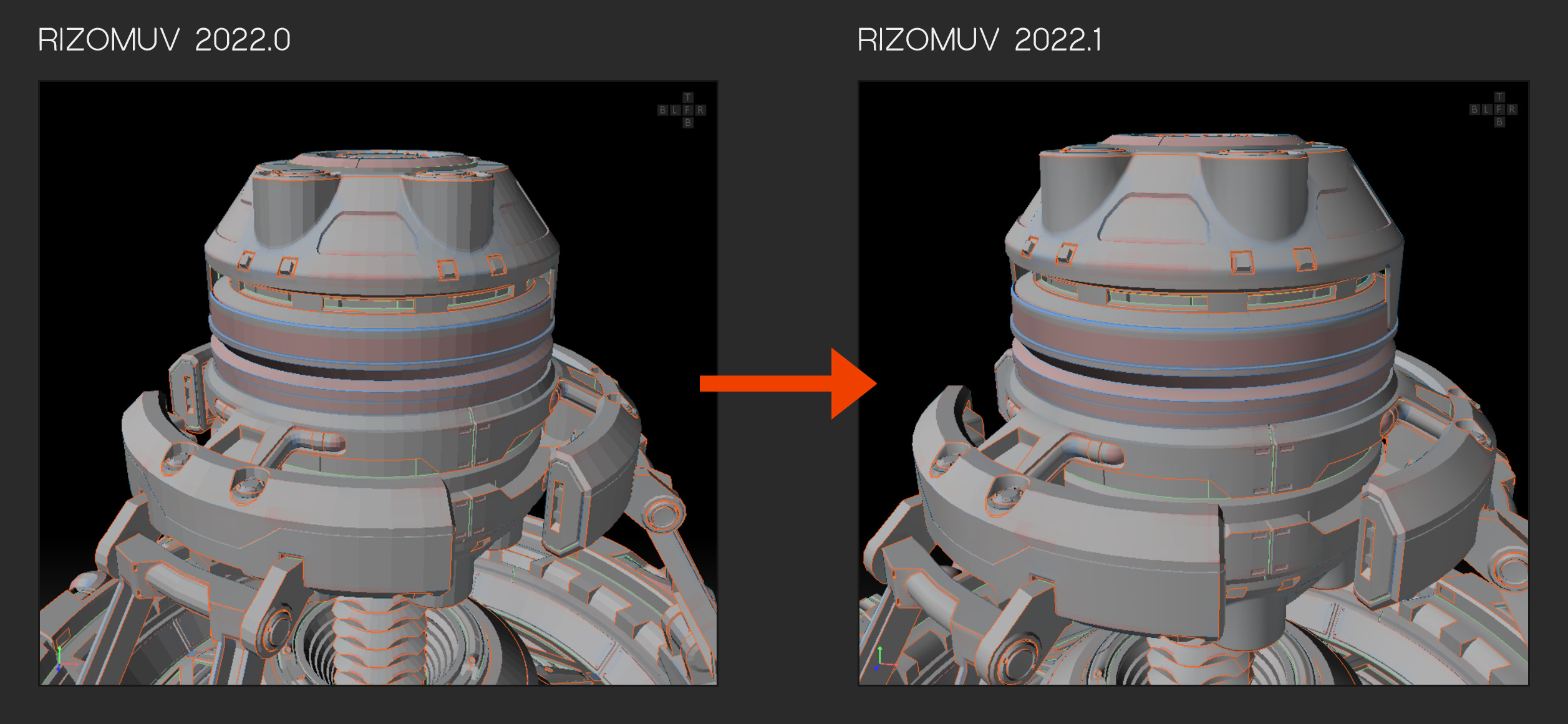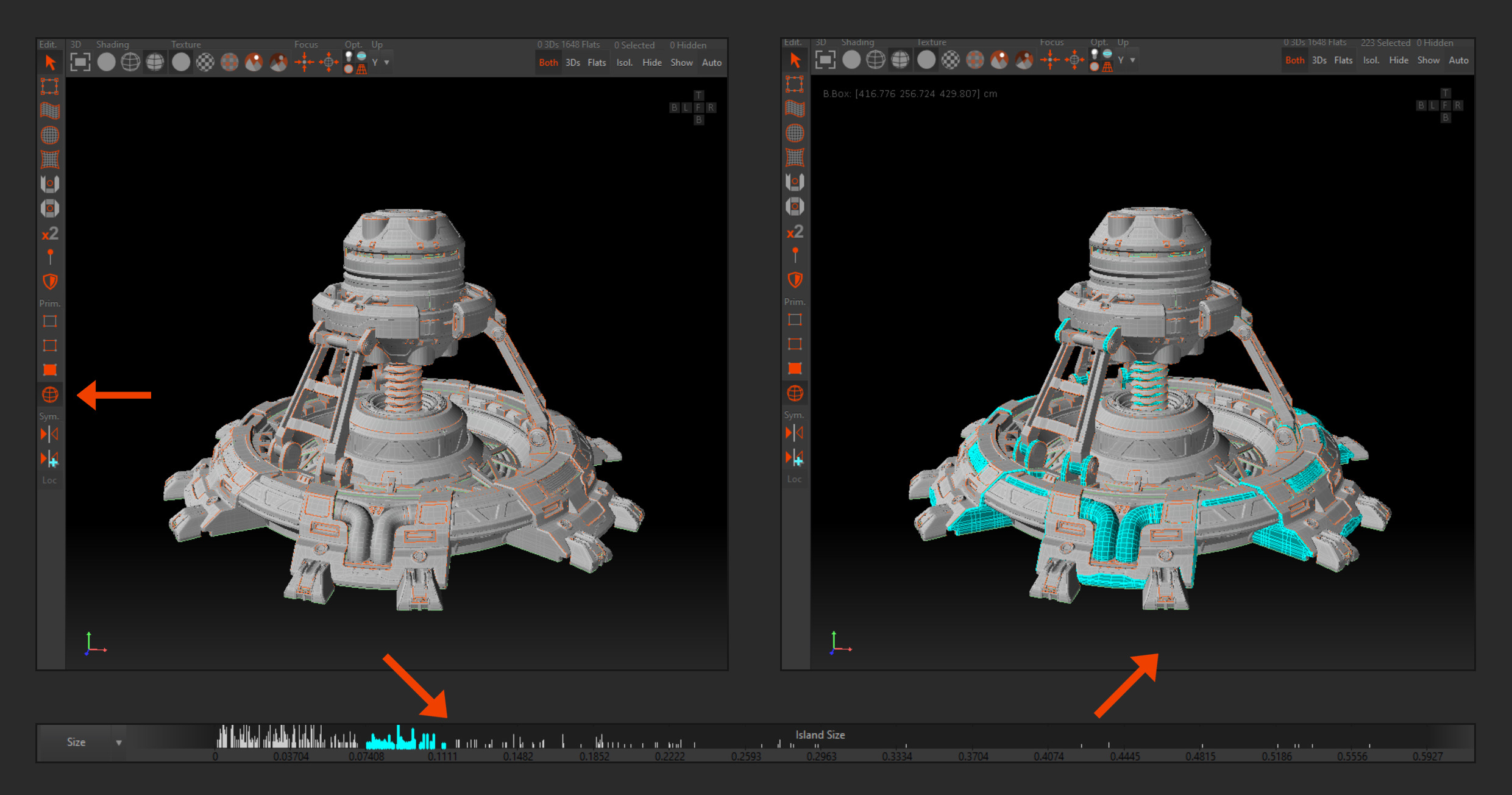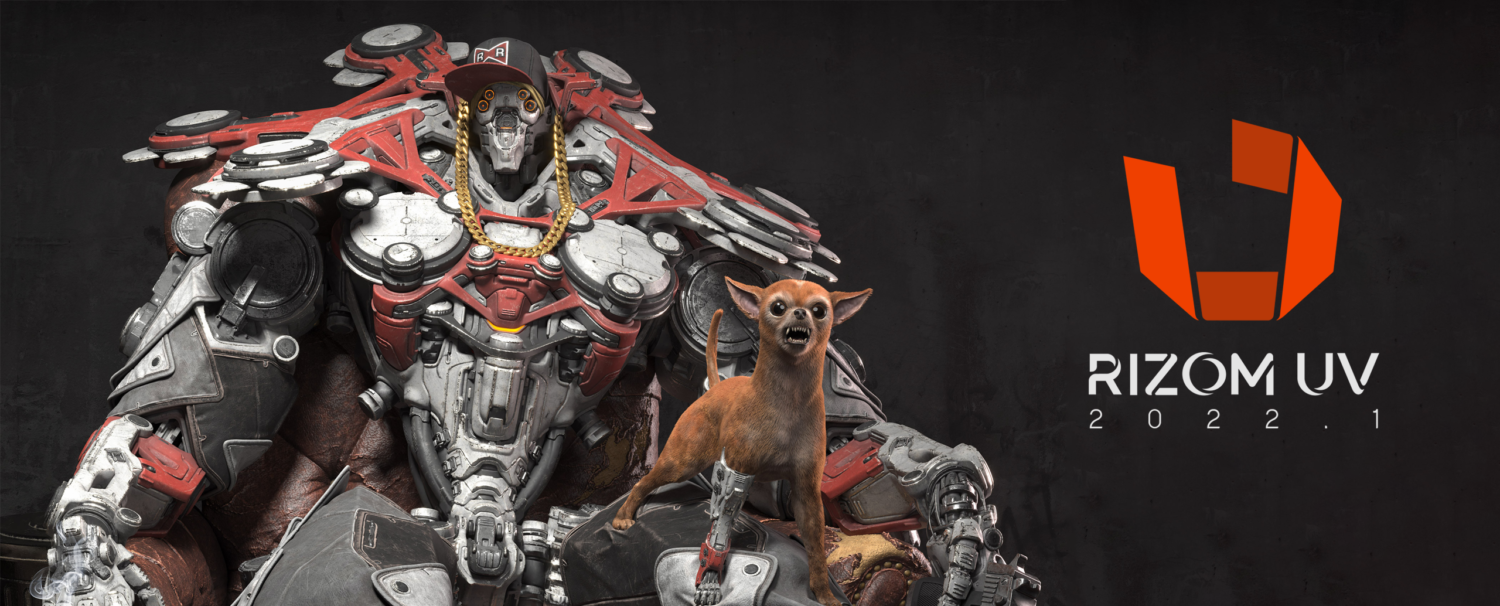Here at Rizom-Lab we are elated to be sharing our latest RizomUV 2022.1 software release. We have been hard at work creating new features, fine tuning already existing features, and making huge changes under the hood.
We are proud to declare that some of these changes and additions, are a direct result of the dialog we have with our excellent community. From the feedback and feature requests we receive from our users, we endeavour to create the best tools and make the most meaningful changes we can. This release embodies that ethos, and it will continue to do so into the future.
Python Integration

Up until this point, scripting in RizomUV has been handled with the LUA programming language. Now, in a first step towards closer communication between RizomUV and 3D applications, Python3 has been integrated into the unwrapping software on all platforms. LUA is still present, but the addition of python sets the stage for things to come.
Apple Silicon Version

RizomUV for Mac is now distributed using a Universal Build. This means that not only does it run on Intel CPUs, but also Apple’s new ARM based processors such as the powerful M1 chip. This brings welcome support to the Big Sur OS and above using the silicon architecture.
Linux Distro Compatibility
The Linux version of RizomUV 2022.1 now embeds glibc in the AppImage installer, and is compatible with a wider range of distributions including Centos 7.5.
Planar Projections

After being requested several times for multiple reasons, the addition of Planar Projections has been made to RizomUV, here’s how it works:
- First, select the islands or polygons to be affected
- Then simply select the type of projection you’d like from the projection panel
- That’s it!
You also have the option of creating a projection based on the viewport’s camera, or by sampling the normal direction of a polygon.
Default Settings

Default settings can now be defined within preferences, this means that attributes such as Scene Units, Texel Density, and Scaling Mode no longer need to be set each time the application is opened. Simply go to the Edit menu > Preferences and set your default settings, these will be used on mesh load providing the file doesn’t already store these settings.
Updated 3D Viewport

The 3D Viewport now displays a model with its embedded normals, gone are the faceted surfaces displayed in previous versions of RizomUV. Objects are now viewed as the artist intended.
Polygon Magic Wand
The Polygon Magic Wand has been reworked in terms of function and presentation.

The Local Angle Visualisation threshold has a new look, the viewport now displays coloured edges to inform the user of the normal breaking angle. This makes using the Magic Wand tool a much more intuitive experience, and no doubt an improvement to workflow. To use:
- Select Polygon mode
- In the Magic Wand panel, select “Curved”
- Alter the “Max Local Angle” Slider to see the viewport update.

By default, the selection angle can now be informed by the surface normals contained within the imported file. You can revert to using geometry normals by:
- Selecting Polygon Mode
- Then click the “Use Geo Normals” checkbox in the Magic Wand Panel.
Island Size Histogram
 Island size is now visualized over a spectrum in RizomUV 2022.1, but this isn’t just a representation, the histogram can be used to select based on island size too. Here’s how to access it.
Island size is now visualized over a spectrum in RizomUV 2022.1, but this isn’t just a representation, the histogram can be used to select based on island size too. Here’s how to access it.
- At the bottom of the UI change the dropdown button from “Distortion” to “Size”
- Click and drag a range in the visualisation bar.
Group Shape Lock
 This release now offers more flexibility and control regarding groups, in particular the Group Shape Lock. This locking method allows the group container to be transformed and scaled, but the actual shape (the with/height ratio) of the container will be locked.
This release now offers more flexibility and control regarding groups, in particular the Group Shape Lock. This locking method allows the group container to be transformed and scaled, but the actual shape (the with/height ratio) of the container will be locked.
Here’s how to use it:
- Select the Group Name Label
- Press Group Shape Lock located in the Island & Groups Panel
- Unselect group, then alter shape of group by click dragging its corners
- Enable “Pack All” in the Packing Panel to enable the packing of group's content
- Press Pack
Remark: You may not have noticed that RizomUV proposes also the "Frame Locked" mode for groups. When enabled not only the group's frame will keep its shape, but it will also stays at its current position and keep it's size. This allows you to decompose the tile into custom defined and locked subareas in which islands can still be grouped and packed.
Further Additions
The work we started last year on making the UI even more accessible is almost done, and we have added the following updates and improvements:
- Scaling Seek Range visualizer, making the packing scaling behaviour more understandable
- Pinned vertex colour can now be customised (see preference dialog)
- Adaptive Shape mode is now the default for groups
- Tile lock button
- Selected polycount

